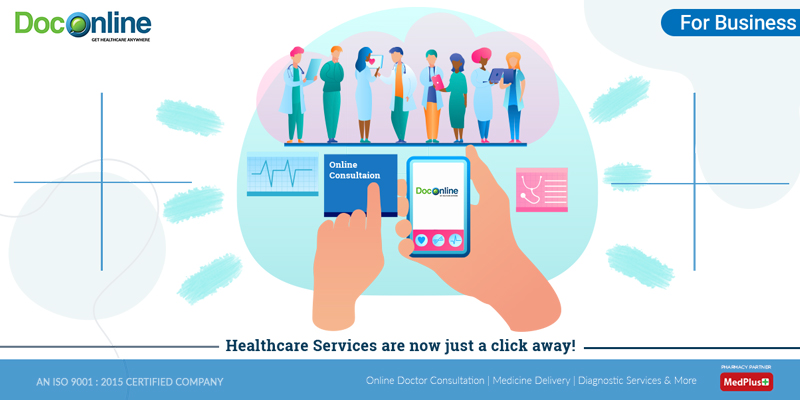Recognizing the Cost-Effectiveness of Subscription-Based Medical Care Versions
As the health care landscape evolves, subscription-based designs emerge as a compelling option, assuring to redefine how people take care of clinical expenditures. Reviewing these models' cost-effectiveness necessitates a nuanced contrast with standard insurance policy, thinking about both financial effects and client complete satisfaction. While they use transparency and predictability in prices, concerns stay regarding their capability to fulfill diverse healthcare demands, particularly for specialized therapies. The point of views of medical care suppliers better complicate this formula, offering a complex challenge. What does the future hold for these models, and can they really provide on their guarantee of obtainable, cost effective treatment?
Summary of Subscription-Based Models
Subscription-based medical care versions, sometimes referred to as straight medical care or attendant medication, are progressively acquiring attention as a possible option to ineffectiveness within traditional medical care systems. These designs operate on the concept of offering clients direct access to doctor with a annual or month-to-month charge, bypassing the need for typical insurance coverage devices. This plan aims to enhance patient-provider interactions by lowering administrative worries, which commonly hinder prompt and personalized treatment.
At the core of subscription-based designs is the emphasis on an extra tailored individual experience. Clients profit from improved access to their doctors, often consisting of same-day or next-day visits, expanded consultation times, and direct interaction channels such as phone or video telephone calls. This model promotes an aggressive approach to healthcare, where people and companies can collaboratively concentrate on preventative treatment and persistent disease management.

Cost Comparison With Conventional Insurance Coverage

One of the primary financial benefits of registration versions is transparency in expenses. Clients pay a predictable charge, which can simplify budgeting and monetary planning. Furthermore, these designs typically eliminate co-pays and deductibles for covered solutions, lowering out-of-pocket investing. Alternatively, typical insurance policy might be more advantageous for people calling for specialized treatment or costly treatments not covered under a subscription version, as they take advantage of the wider coverage network and cost-sharing mechanisms.
Nevertheless, cost-effectiveness is context-dependent. While membership versions may offer financial savings for those largely needing health care, individuals with persistent conditions or specialized health care demands might discover traditional insurance coverage extra extensive. Consequently, assessing certain medical care requirements and prospective use is essential in determining the most economical alternative for individuals.
Influence on Client Contentment
Patient complete satisfaction within subscription-based health care versions often reflects a significant enhancement over standard insurance coverage systems. This improvement is mostly credited to the individualized care and availability these designs use. Individuals often report greater fulfillment because of decreased wait times and the ease of scheduling consultations. Unlike standard systems, where individuals may experience delays in receiving treatment, subscription-based versions make sure more timely and direct communications with doctor.
Moreover, the openness in expenses associated with subscription-based medical care eases the common frustrations connected to unexpected fees and intricate billing procedures seen in traditional insurance policy (subscription based healthcare). Clients value knowing the specific financial dedication upfront, resulting in raised count on and self-confidence in their health care management
Additionally, the emphasis on precautionary treatment and wellness in registration models adds to boosted health and wellness end results, further improving person fulfillment. By concentrating on ongoing health care instead of episodic treatment, people experience a more continuous and alternative healthcare trip.
Furthermore, the improved provider-patient connection cultivated in these models, characterized by more time spent Read Full Article per person and customized interest, plays a crucial role in raising individual contentment degrees, as patients feel genuinely taken care of and recognized.
Supplier Perspectives and Experiences
From the provider's viewpoint, subscription-based healthcare models provide a transformative method to providing clinical solutions. These versions stress a preventative and aggressive medical care approach, permitting carriers to concentrate on thorough person treatment without the restrictions of conventional fee-for-service setups (subscription based healthcare). This change in focus frequently causes boosted patient you can find out more outcomes and boosted supplier fulfillment, as medical care specialists can allot even more time and resources to patient engagement and individualized treatment plans
In addition, membership models facilitate foreseeable income streams, which enhance economic stability for healthcare carriers. This predictability enables enhanced resource preparation and allotment, adding to a much more efficient medical care shipment system. Providers can spend in staff modern technology, framework, and training enhancements, therefore improving the top quality of care supplied.
However, the shift to subscription-based designs is not without difficulties. In spite of these difficulties, several providers find that the benefits of enhanced individual communication and streamlined operations exceed the preliminary difficulties, making subscription-based designs an appealing choice.
Future Leads and Challenges

A primary challenge is governing conformity, as membership models have to comply with evolving medical care policies and insurance policy demands. This necessitates constant adjustment and advancement to ensure placement with legal criteria. Additionally, incorporating these models right into existing healthcare frameworks can be complex, needing significant financial investments in technology and training.
There is also the possible danger of developing inequities in health care accessibility, as membership versions might favor those that can afford them, leaving susceptible populaces underserved. Addressing this needs thoughtful factor to consider of pricing methods and aid mechanisms to guarantee inclusivity.
Verdict
Subscription-based healthcare designs offer a viable option to typical insurance coverage by offering financial predictability and transparency, especially profiting people with chronic conditions or regular health care demands. The cost-effectiveness of these versions is contingent upon private health care use patterns and situations. While they may improve person complete satisfaction and enhance budgeting, obstacles continue to be in dealing with specialized care requirements. Future considerations include balancing detailed insurance coverage with cost and integrating pop over to this site these models within the more comprehensive healthcare system for optimum outcomes.
Subscription-based medical care versions, often referred to as direct primary treatment or attendant medicine, are significantly gaining attention as a possible remedy to ineffectiveness within standard healthcare systems. Unlike traditional systems, where people may experience delays in obtaining treatment, subscription-based models make sure even more straight and prompt interactions with healthcare companies.
These models stress a preventative and positive medical care technique, allowing carriers to focus on comprehensive person care without the restraints of standard fee-for-service arrangements. As these designs continue to get traction, they use the prospective to revolutionize person access to care, enhance service shipment, and optimize health care investing.Subscription-based health care versions present a feasible alternative to standard insurance policy by offering monetary predictability and openness, especially profiting individuals with persistent problems or frequent health care demands.
Comments on “Why Subscription Based Healthcare is Gaining Popularity Among Patients Today”